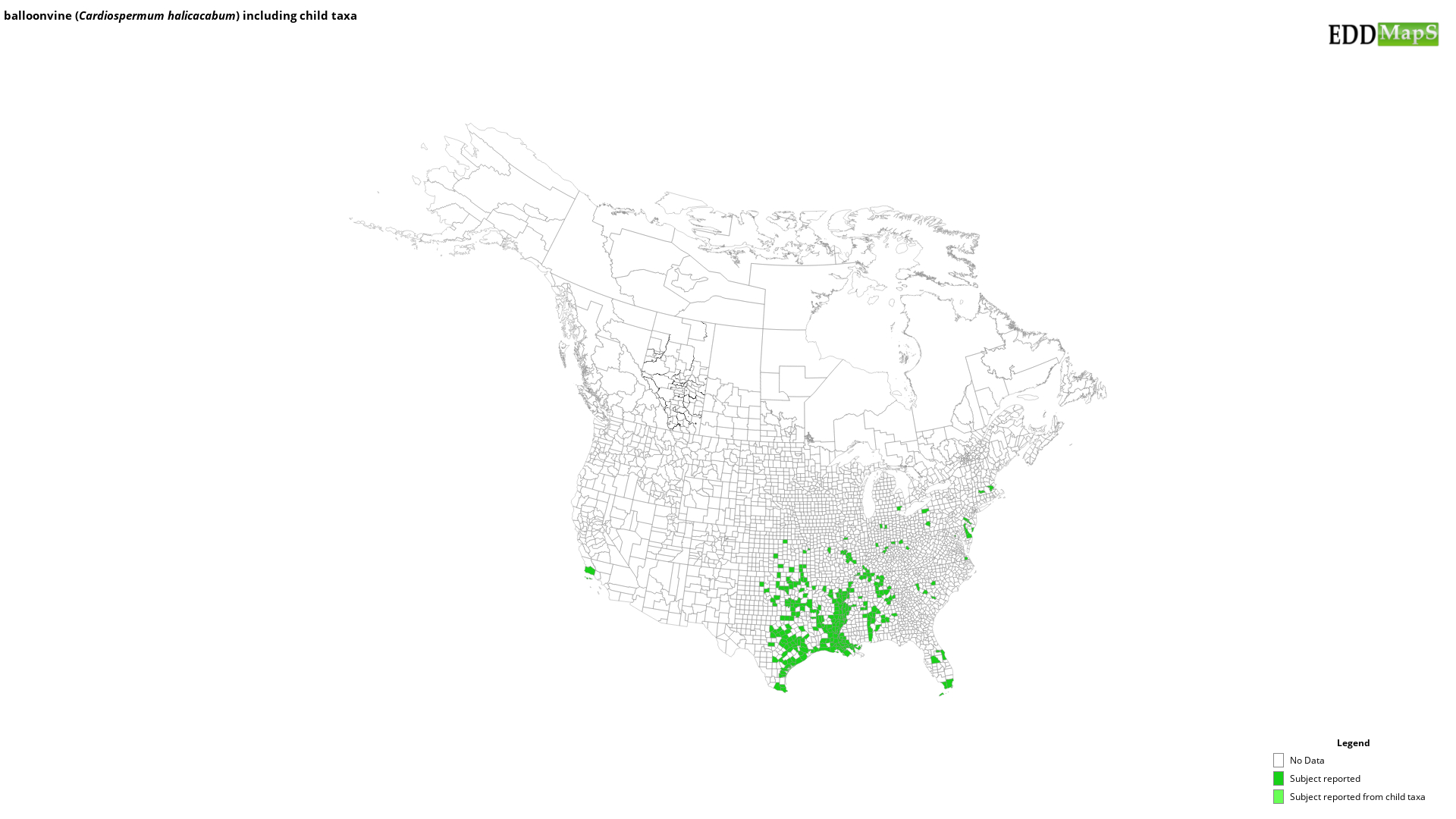balloonvine
(Cardiospermum halicacabum)
This species is Introduced in the United States
Appearance
Cardiospermum halicacabum is a deciduous woody, perennial to annual vine native to Tropical America. The square stems are fast growing and can reach up to 10 ft. (3 m) long. The plants climb with forked tendrils.
Foliage
The compound leaves have large teeth and lobes on the leaflets that can reach 4 in. (10 cm) long.
Flowers
The small white flowers bloom from summer through the fall, flowers are not very showy.
Fruit
The fruit from which the plant gets its common name is balloon-like. They are green maturing to brown, thin-shelled, inflated, angled capsules up to 1.13 in. (3 cm) in diameter containing 3 black seeds each, with a white heart-shaped scar.
Ecological Threat
Cardiospermum halicacabum is a weed of disturbed ground, especially in wetland areas or riparian corridors. It has been introduced throughout the southern and southeastern United States.
Selected Images
Maps
EDDMapS Distribution - This map is incomplete and is based only on current site and county level reports made by experts, herbaria, and literature. For more information, visit www.eddmaps.org
State Lists - This map identifies those states that have this species on their invasive species list or law.
Invasive Listing Sources
- Alabama Noxious Weeds - Class C Noxious Weed
- Jil M. Swearingen, Survey of invasive plants occurring on National Park Service lands, 2000-2007
- Kentucky Exotic Pest Plant Council - Significant Threat
- Maryland Code and Regulations Noxious Weed & Seed Law
- National Park Service, Mid-Atlantic Exotic Plant Management Team Invasive Plant List
- South Carolina Plant Pest List
- Texas Noxious Weeds
- WeedUS - Database of Plants Invading Natural Areas in the United States
Taxonomic Rank
| Domain: Eukarya |
| Kingdom: Plantae |
| Phylum: Magnoliophyta |
| Class: Magnoliopsida |
| Superorder: Rosanae |
| Order: Sapindales |
| Family: Sapindaceae |
| Genus: Cardiospermum |
| Cardiospermum halicacabum |
References
Common Name Reference: Weed Science Society of America Common Names List
Scientific Name Reference: USDA, NRCS. 2010. The PLANTS Database. National Plant Data Center, Baton Rouge, LA, USA.


